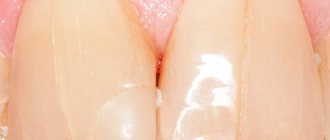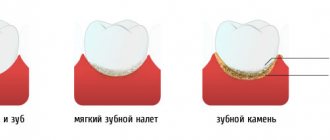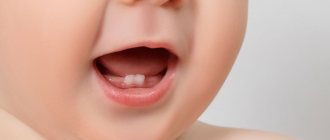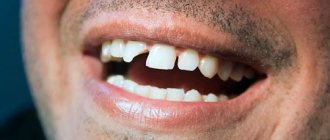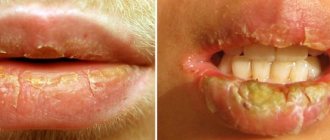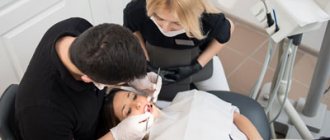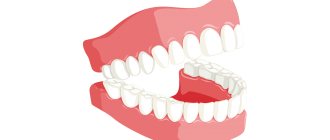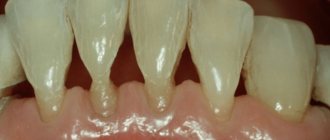Author of the article:
Soldatova Lyudmila Nikolaevna
Candidate of Medical Sciences, Professor of the Department of Clinical Dentistry of the St. Petersburg Medical and Social Institute, Chief Physician of the Alfa-Dent Dental Clinic, St. Petersburg
Everyone wants to have straight white teeth. A beautiful smile is not only a symbol of health. This is the key to self-confidence, one of the key factors in successful and fruitful communication. Is it worth mentioning that the white-toothed handsome man smiling at you in the reflection in the mirror every morning gives you an excellent mood for the whole day?
But what to do if plaque stubbornly appears on even teeth every morning? Can two cups of coffee during the day and a couple of packs of cigarettes put an end to a beautiful snow-white smile? Let's try to figure out why plaque appears on the teeth of adults, how to avoid it and how to deal with it.
Reasons why brown spots form
- Smoking and drinking drinks such as coffee and black tea have a negative effect on enamel discoloration. Poor brushing of teeth only worsens the formation of stains on the enamel.
- Uneven distribution of load on the teeth, incorrect bite, which can lead to abrasion of the enamel. At this point, she becomes vulnerable to the appearance of spots of various colors on her.
- The development of inflammatory diseases of the teeth and gums contributes to the increased development of pathogenic bacteria, which can begin to destroy the enamel on which brown spots appear.
- Plaque and tartar build-up can also cause stains on the enamel. Increased plaque formation on teeth can signal a disease of the digestive and endocrine systems of the body.
- Brown spots can appear on the teeth of a pregnant woman or if she is going through menopause. In these cases, hormonal changes occur in the woman's body, which can lead to the formation of brown spots on the enamel of the teeth.
- Dental caries, in which spots can appear along the borders of caries holes or in places of old fillings.
- Taking tetracycline antibiotics and chlorhexide-based drugs, especially during pregnancy, can affect the demineralization of tooth enamel, and it loses resistance to harmful bacteria.
How does plaque form on teeth?
Plaque on teeth in adults can be soft or hard. The first is always present on the mucous membrane, and the second does not form immediately; dentists call hard plaque tartar.
1. On each tooth there is always a structureless semi-permeable film called pellicle. The thickness of this film is only 1 micron. The pellicle contains immunoglobulin proteins and enzymes. All metabolic processes between enamel and saliva are carried out through it.
2. Microbes in the mouth continuously secrete heteropolysaccharides, which are attached to the pellicle. The accumulation of microbes provokes the appearance of plaque on the teeth.
3. Without cleansing, bacteria, molecules, dead cells and other food elements settle on the teeth; saliva helps the plaque harden and thicken.
4. Soft plaque mineralizes and turns into hard plaque.
Then the stones begin to put pressure on the gums, irritating the tissues and interfering with the normal metabolism between saliva and tissues. As a result, tooth enamel is destroyed, gums become inflamed, plaque penetrates into the deep layers of the tooth, and caries appears.
Types of plaque in adults
Contrary to popular belief, plaque on teeth in adults can be more than just yellow. Let's look at their most common types.
Dark brown coating
Why it appears: Yes, dark stripes on the teeth do not always indicate caries. Most often, teeth acquire such pigment due to nicotine tar and colored foods. Such plaque can also appear due to disturbances in the metabolism of calcium, vitamin D, and phosphorus. Surprisingly, dark plaque is also common in children; a brown tint to the teeth indicates enamel hypoplasia and dysbacteriosis. The cause of a dark shade is often a lack of saliva.
How to get rid of it: Contact your dentist. Unfortunately, it is impossible to remove dark plaque on your teeth on your own. No active cleansing or application can cope with this shade: too careful self-care can cause the condition to worsen. If plaque is caused by smoking, ultrasonic teeth cleaning can deal with it, but if the cause of the dark shade of the crowns is dysbacteriosis, installation of veneers is recommended.
Black plaque
Why it appears : A terrifying black plaque on the teeth is most often a symptom of dysbacteriosis, helminthic infestation, fungi in the oral microflora and gastrointestinal diseases in adults. This plaque can also appear due to the abuse of cigarettes, coffee and alcohol.
Dentists consider the most common reasons for the appearance of black plaque on teeth in adults:
- taking antibiotics;
- severe diseases of the spleen, liver,
- viral infections;
- abscesses;
- drug use;
- presence of copper products in the mouth;
- allergic reactions;
- difficult working conditions;
- parasites.
Black plaque can also appear due to chemotherapy.
How to get rid of it: Black plaque can only be removed with the help of a dentist. No amount of whitening pastes, rinses or balms will help remove it. To restore your teeth to their former whiteness, the doctor can also clean them with ultrasound or install veneers.
Yellow plaque
Why it appears : Often teeth are distinguished by their natural yellow pigment. This, as a rule, indicates that the human body is oversaturated with minerals, so the enamel has become yellow and hard, and bleaching it is very dangerous. A soft yellow coating at the roots is often inherited.
The most common reasons for the appearance of yellow plaque, dentists include:
- sugar abuse;
- poor oral hygiene;
- wearing braces;
- varied diets;
- age;
How to get rid of it: Regular professional cleaning, oral care, visiting the dentist twice a year, proper nutrition are the basis for white and healthy teeth. If you follow these simple rules and give up bad habits, you can get rid of the unaesthetic yellow plaque forever.
Folk recipes can also help in the fight against yellowness. For example, fresh strawberries or wild strawberries are excellent for cleaning teeth from plaque. It is enough to eat a couple of berries before brushing your teeth: berry acid will soften plaque on your teeth, and then it can be easily removed with a brush.
An effective remedy against yellow plaque is baking soda. However, you need to remember that soda cannot be used regularly - the substance is unsafe for enamel. It is optimal to use baking soda once every 1-2 weeks and brush your teeth with it instead of toothpaste.
White (gray) coating
Why it appears: It’s hard to believe, but it is a soft white, not a yellow coating that is always present on the enamel in children and adults. With regular cleansing, these food particles, bacteria, and mucous membranes can be easily removed with a toothbrush.
If a person neglects oral hygiene, the plaque hardens, stones form on the teeth, which then provoke caries.
The main causes of white (gray) plaque on teeth include:
- lack of vitamins;
- unbalanced diet;
- the predominance of soft food in the diet;
How to get rid of: White plaque can be dealt with at home. The main thing is to notice its appearance in time and not neglect your teeth in the future.
If the white plaque cannot be dealt with using improvised means, it is recommended to visit a dentist.
Brown plaque
Why it appears: Smokers and coffee drinkers most often suffer from brown plaque. After eating these products, a film forms that is almost impossible to remove with a toothbrush.
In rare cases, brown plaque on the teeth provokes the production of brown salt, which is formed due to the production of secretions into saliva.
Causes of brown plaque on teeth also include:
- frequent mouth rinses with potassium permanganate;
- the effect of chlorinated water;
- vapors of iron, mercury, lead, manganese, iron;
- acid tissue necrosis;
- Rhesus conflict of a pregnant woman.
How to get rid of it: Unfortunately, it is impossible to remove brown plaque on teeth using improvised means. To prevent the unpleasant color from appearing again, it is important not only to hygienically brush your teeth, but also to determine and, most importantly, cure the cause of plaque formation.
Green, red and orange plaque
Why it appears: Most often, unusual green, red or orange plaque on the teeth of children and adults is caused by various types of fungi. For example, chlorophylls make green enamel, and chromogenic bacteria make orange enamel.
Red enamel can be a symptom of porphyria, a hereditary disease in which the pigmentation of soft tissues is disrupted. Teeth can also turn bright red as a result of bleeding injuries (pulp sac ruptures).
How to get rid of it: Only a dentist can eliminate unpleasant staining of enamel. If necessary, the doctor will refer the patient for tests and examinations from other specialists, help eliminate the cause of the plaque and, of course, clean the teeth.
If plaque of any kind is detected, it is worth remembering that dentists do not recommend cleaning it exclusively with home remedies. Of course, whitening pastes and effective folk recipes can help to cope with the defect for a short time. But only an experienced dental therapist is able to assess the neglect of plaque and prescribe the most effective method of treating it, based on the condition of the oral cavity of a particular patient.
Other causes of stains on tooth enamel
Enamel consists of microscopic pores into which substances entering the body when eating can penetrate. Chemicals and dyes destroy enamel, penetrate into the deep layers of its structure and cause pulpitis, periodontal disease or caries, which ultimately leads to the appearance of stains on the enamel.
How to remove plaque from teeth on your own
Many people do not like to visit the dentist again, especially when it comes to removing plaque, which does not cause much inconvenience. The reasons for this are clear: lack of free time and reluctance to pay for the procedure.
You can try to remove plaque from your teeth at home, but this will only work if there are no subgingival deposits and the plaque layer is thin.
The first method involves using a special toothpaste to remove plaque with abrasive substances. The label of such pastes must indicate the RDA indicator, indicating the degree of abrasiveness. In pastes that eliminate plaque, its value should exceed 100. But such pastes cannot be used on an ongoing basis. If the paste contains pyrophosphates, then it can help get rid of tartar, since they have the ability to dissolve its matrix.
The most effective of these pastes are:
- President White Plus. The abrasiveness index is 200 units; in addition, the composition contains silicon dioxide, which has abrasive and polishing properties. You should not use the paste more than once a week.
- Lacalut White. According to the abrasiveness index (RDA=120), it is more gentle than the previous sample. The composition contains pyrophosphates, which make the plaque loose.
The second method is to use a special toothbrush, which allows you to remove plaque yourself. Recommended use:
Disease prevention
For preventive purposes, the patient must perform a number of measures to improve the condition of tooth enamel:
- carefully observe oral and dental hygiene. Rinse your mouth with special solutions after each meal;
- give up bad habits (smoking and drinking alcohol);
- undergo an annual dental examination at the dentist.
Content:
- Tooth enamel: general characteristics and properties:
- Possible reasons:
- What to do if your child’s baby teeth are brown.
1.1. Maturation of enamel.
2.1. Plaque. 2.2. Enamel hypoplasia. 2.3. Fluorosis. 2.4. Caries. 2.5. Other reasons.
Regardless of its cause, such a problem is a mandatory indication for comprehensive diagnostics. Moreover, we are talking not only about visiting the dentist, but also about consulting a pediatrician and highly specialized specialists, since brown plaque on children’s baby teeth can be the result of either a banal lack of hygiene or any diseases.
Teeth whitening at home
At home, you can try to whiten your teeth with products that are available in every home.
- Make a paste from activated carbon, which must be ground into powder and mixed with a small amount of soda, adding a few drops of water to it and stir the composition until it becomes a paste. Apply this “Paste” to your teeth and brush them.
- Lemon juice and soda. Add some baking soda to lemon juice and brush your teeth with this mixture. You can brush your teeth with this product for 1-3 months.
Getting rid of brown stains at home can only be used as an additional means that is used when undergoing a medical course of dental treatment, in a dental office. Therefore, the most ideal option would be to contact a specialized dental clinic.
What to do if your child's baby teeth are brown
The scope and scope of therapeutic measures is determined only by the dentist after an examination. Usually this:
- correction of nutrition, introduction of foods rich in calcium into the diet, limiting the consumption of sweets and baked goods;
- training in oral hygiene rules;
- taking multivitamins;
- the use of rinsing solutions (these can be ready-made medications or self-prepared decoctions of chamomile, calendula, etc.);
- professional plaque removal;
- filling (if the volume of work is large, this procedure is sometimes performed under general anesthesia).
Modern pediatric dentistry allows you to painlessly and without unnecessary stress cope with the problem of brown baby teeth and prevent damage to an already permanent bite.
How to remove plaque in dentistry
First of all, the doctor conducts a diagnosis, determining the type and possible causes of plaque on the teeth. Consultation with other specialists may also be prescribed.
Even with ideal hygiene, plaque forms on the teeth over time, which can only be removed in a dental setting. Professional teeth cleaning is recommended for everyone, without exception, 1-2 times a year. Parents should take into account that it is impossible to remove Priestley’s plaque from a child at home, no matter how hard you try. Aggressive methods will only aggravate the situation and lead to damage to the gums or enamel of baby teeth.
How to get rid of yellow plaque on teeth? First of all, carry out professional oral hygiene. It consists of several stages.
- Preliminary indication.
Using special means (indicators), the hygienist carries out staining, that is, identifying all areas where deposits have accumulated. - How to get rid of plaque on teeth?
Carry out its gentle removal. The method is selected in accordance with the patient’s age and individual characteristics. Cleaning can be done using a sandblaster with glycine (for children). For adults - ultrasonic cleaning and/or plaque removal using the Air Flow method. - Enamel polishing.
Brushes and pastes of varying degrees of abrasiveness are used. - Remineralization.
The final stage of teeth cleaning is carried out to strengthen the enamel and prevent caries.
Treatment methods
The treatment regimen is determined based on the data obtained during the diagnosis. In cases where the cause of brown spots on the teeth is external factors, the following is carried out:
- Grinding of the affected tooth. It is prescribed after plaque is detected. The procedure is carried out using specialized equipment, and upon completion, a fluoride-containing preparation is applied to the enamel to strengthen the dental tissues.
- Bleaching. It is recommended when the cause of dark spots is the abuse of coffee and cigarettes. After whitening, the patient must use fluoride toothpastes for a period determined by the doctor. In addition, if the patient does not give up bad habits, in order to prevent the reappearance of brown spots, he needs to regularly treat the oral cavity with an antiseptic solution.
- Adjusting your diet. It is necessary for intestinal diseases, fungal infections of the body and in other cases.
In the initial stages of caries, when the disease manifests itself as a spot, remineralizing therapy using fluoride-containing drugs is recommended.
The method is aimed at increasing the resistance of the hard tissues of the affected tooth. Treatment with remineralizing therapy lasts a long time. However, it allows you to avoid drilling the tooth and then installing a filling.
In some cases, when identifying a brown spot, the following are used:
- deep fluoridation, which involves applying highly active substances to the problem area;
- medicinal electrophoresis, during which a low-power direct current is applied to the tooth;
- adhesive method that involves treating the enamel with a diamond bur and installing composites.
Types of cracks: classification
Depending on where the crack occurs, in dentistry there is a different classification of this pathology, and appropriate treatment is also prescribed. Thus, destruction can affect enamel and denta. If a small strip appears, it will be enough to restore the tooth, but if it is more significant, it will be necessary to install a veneer. If the layers of the denta are affected, then in some cases you can even lose a tooth.
As a rule, destruction begins with a small crack, which increases in length, expands, or forms a network. According to statistics, such destruction often appears in the lower jaw, which bears heavy loads. Moreover, treated carious teeth can more often form pathology. After all, they are more weakened.
The problem can occur both on the front and back walls of the tooth, and can also form between the teeth, which over time will lead to hidden caries. After all, it is very difficult to detect such a defect.
With deep destruction, black cracks form, which can be noticed independently. Depending on the location, the pathology can be oblique, horizontal and vertical.
Vertical
A vertical streak most often occurs on the front tooth. It can go along the entire surface, affecting the root. If the pulp is affected, the tooth will have to be removed. So, if you find a longitudinal stripe, you should immediately contact your dentist so that the treatment is quick and painless.
Horizontal
Horizontal cracks are considered the most dangerous, since their enlargement often leads to tooth loss as a result of its fracture. At the same time, dental practice shows that with such pathology the process of destruction proceeds more slowly and pulpitis does not occur.
Oblique
Like horizontal cracks, inclined cracks damage the pulp, and therefore such a tooth cannot be restored - it must be removed. Since the defect can begin with a small vertical destruction, you should not start the process by contacting a specialist.
Saliva and its role in oral health.
Firstly, saliva is a source of calcium and phosphorus for enamel (remember we talked about remineralization).
Secondly, saliva has a buffer capacity.
The buffering capacity of saliva is the ability to neutralize acids due to the interaction of the main buffer systems of saliva: bicarbonate and
phosphate
Eating carbohydrate foods for a long time reduces, and eating high-protein foods increases the buffer capacity of saliva.
On average, the pH of saliva in the oral cavity of a healthy person is between 6.5 and 7.5.
Slight fluctuations in pH are possible during the day and night (slightly lower at night).
An adult produces an average of 1500 to 2000 ml of saliva per day.
The rate of secretion depends very much on many factors - age, food irritant (I saw my favorite dish and even salivated, nervous excitement.
During sleep, saliva is secreted 8–10 times less.
The high buffering capacity of saliva is one of the most important factors that increases the resistance of teeth to caries.
The components of saliva make up the pellicle - a thin film that covers all surfaces of both hard and soft tissues of the oral cavity.
The pellicle has many tasks, including regulating the microbiota of the oral cavity.
The deposition of cells and food debris from saliva onto the pellicle leads to the formation of dental plaque - a loose white substance made of bacteria, desquamated epithelium, leukocytes and food debris.
The compaction of a pellicle in a certain place and the accumulation of bacteria there is a bacterial plaque, the source of caries.
Now, with an understanding of what saliva is needed for and what a pellicle is, let’s return to the topic of plaque.
Stages of caries spots
Dentists distinguish several stages of damage to one or more teeth by caries. Each stage is characterized by certain features, differences and symptoms.
Caries in the white spot stage
During the initial stage of caries, a person does not experience any discomfort and does not feel pain. The pathogenic process can be identified only by the white spots formed on the surface of the teeth. Although at first glance the tooth seems absolutely healthy, when stains appear in it, the process of destruction of structural tissues already occurs.
The spots that appear on the enamel in the initial stage have a whitish tint and are small in size, so upon visual inspection they are practically invisible. Only a professional specialist is able to identify the onset of pathogenic destruction of tooth enamel and promptly treat caries in the stain stage.
If you ignore treatment, then over time the light spot fades, tooth enamel loses its natural shine, becomes fragile and loose, and the carious process progresses more and more.
Important! If you identify the development of the initial form of caries, which manifests itself as microscopic specks, then you can avoid serious dental treatment. Therefore, every person should visit the dentist at least 2 times a year for a preventive examination of the oral cavity and, in particular, the condition of the teeth.
Black spot on teeth
If you ignore the appearance of white spots, then caries gradually passes into the next stage of a dark spot. This form is more serious and dangerous in comparison with the previous one.
Demineralized tissues grow very quickly, the white spots become darker and more visible. The white shade turns into brown or brown due to pathogenic bacteria entering the porous structure of the enamel.
Pathogenic microorganisms increasingly destroy the tooth surface and the disease moves into the next stage - superficial caries, the treatment of which is longer and more complex.
Symptoms of a cracked tooth
A tooth crack is a split in the enamel, which causes the main symptoms:
- Increased sensitivity to hot and cold.
- Aching pain for no apparent reason.
- Unpleasant sensations when closing the jaw.
It is important to understand that small cracks may not be noticeable, but over time they increase, and the tooth itself is destroyed. In order to prevent destruction, it is better to seek help in a timely manner if you discover one or another sign of a condition deviating from the norm. After all, in this case, treatment will be faster and will cost you less.
Why isn't every spot a black tooth decay?
There is no need to think that dentists are being cunning, wanting to deliberately turn an initial carious cavity into mid- or deep-stage caries.
After all, the more complex the problem, the more expensive its treatment. No doctor does this. It’s just that the identified violation has a completely different origin. In reality, dark spots can represent:
- Consequence of hypoplasia. This is a dental disorder in which, during the formation of a tooth, its crown part is underdeveloped. The disease is a consequence of metabolic disorders in the buds of teeth. It can also develop due to improper metabolism of proteins and minerals in the fetal body during its intrauterine development. Rickets, somatic pathologies, diseases of the gastrointestinal tract, severe infectious diseases - all these are also factors that provoke hypoplasia.
- The result of fluorosis. This disease occurs due to the constant and prolonged ingestion of large amounts of fluoride into the body. First, whitish spots form on the crowns, and then depressions resembling black caries. During examination, the doctor records destructive and erosive changes in the enamel.
- Erosion of teeth. Another type of non-carious lesion of tooth enamel. Defects occur on the outer layer of the crown and can even affect the dentin. Erosive defects are most often localized symmetrically. They provide an unsightly cosmetic effect and therefore require urgent correction.
In many non-carious pathologies, it is possible to improve the aesthetics of a smile through remineralization. The patient is prescribed vitamin and mineral complexes, calcium and phosphorus supplements, and local applications. Electrophoresis is used in many clinical situations.
Only with voluminous cavities reminiscent of black caries do they resort to filling material. If the damage is very severe (which happens when a person puts off visiting the dentist for a long time), even prosthetics may be required.
It is important to understand that caries is always a cavity of microbial origin. That is why it has to be drilled out to remove all damaged tissue and prevent further spread of pathogens. From this position, not every even point on the tooth requires the use of a drill.
